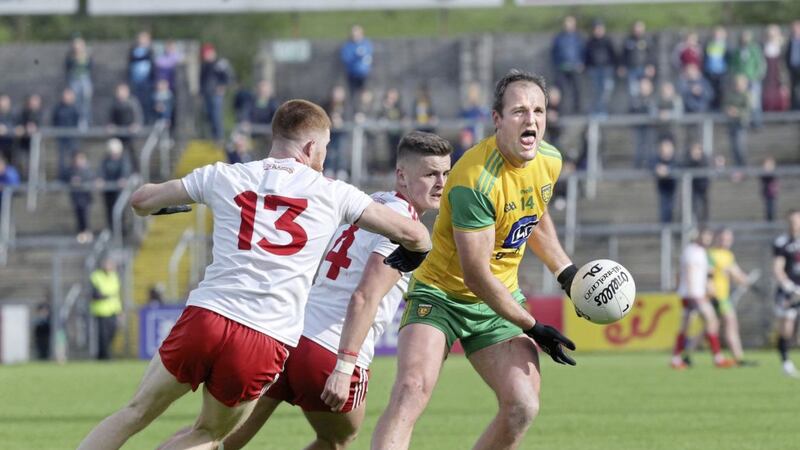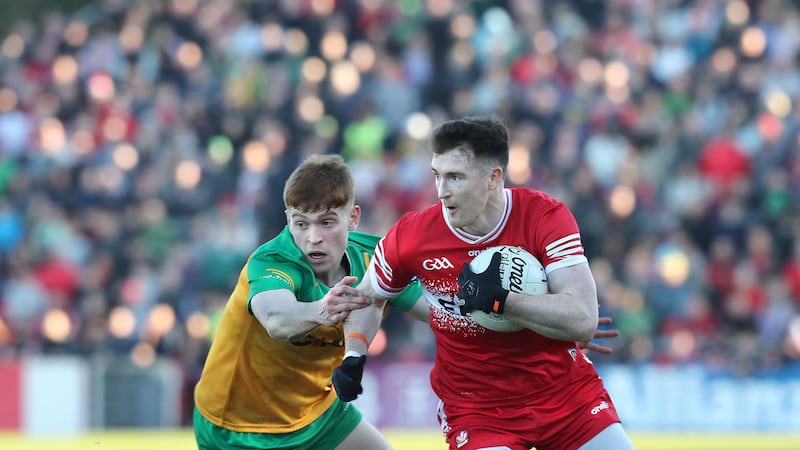‘SPACE is your friend’ is the key message for a return to training and playing contact team sports.
That’s not a call for even more hi-tech solutions and equipment, although it does come from Newry technology firm STATSports’ study into contact levels within the GAA.
STATSports, which is also assisting soccer’s English Premier League on it’s ‘Project Re-start’, yesterday published a white paper entitled ‘GAA player proximity report’.
This studied the number of times and for how long players came into close proximity with each other (aka ‘incursions’), in both training and actual games.
The clear advice is that there will have to be an element of social distancing incorporated into training in order to reduce the risk of potentially transmitting coronavirus.
The report’s author, STATSports sport scientist Ryan McLaughlin, suggested that this can be done by avoiding certain training drills, or reducing the amount of time spent standing round:
“Regarding a return to training collectively, this report has shown that certain drills have lower incursion rates than others and as such they may be favoured initially in a return to training.
“We know that if the ratio of open space to the amount of participant per team is in favour of space, there will be significantly lower rates of incursion each minute…
“Tactical focused drills such as kick-outs show higher rates of incursions than other drills although this may also be influenced by organisational and coaching elements of tactical drills.
“Players may be standing in proximity for extended periods of time while receiving instructions or feedback from coaches.
“Excluding the kick-out drill average incursion rate of 72 incursions per minute, a range of between four and 27 incursions per minute was observed in all other drills.”
After tactical kick-outs, kick-passing and shooting drills led to the next highest rates of incursions in training – although these exercises had lower than average durations of incursions than other types of drill.
The report notes that a large-sided game (seven players or more per team) with adequate space will result in fewer incursions by each player. Many of the drills which may be deemed a ‘higher risk’ can also be modified by using the space and controlling participants.
One comparison was observed across two separate training sessions among the same team:
Session 1 saw the players compete with 10 players per team inside a premeasured area of 90m x 90m while session 2 saw the same number of participants - but with a difference of playing across a full pitch.
The incursion rate dropped significantly for each player from 10 incursions per minute (Session 1) to three incursions per minute in Session 2.
The maximum observed duration of incursion increased from 17.3 to 24.6 seconds within the full pitch game while both games showed an average incursion duration of 1.9 seconds.
As would be typically expected, collective team training sessions bring players in proximity of each other at a much higher frequency than observed in competitive game-play.
The typical GAA team training session will consist of recovery activities outside of the physical training demands, such as water breaks, team huddles, or taking general coaching advice. With these recovery activities there will be prolonged periods of static or very little movement, generally in proximity of teammates.
The advice is to think closely about, and monitor, all aspects of training, including pre- and post-training interaction, warm-ups, the distance between players while standing around and within changing rooms.
The white paper also points out that while “the frequency of incursion is significantly higher during training sessions than observed in game-play, the number of different players who come into proximity must also be taken into consideration.”
A player matrix from an entire training session lasting 70 minutes found that most players come into proximity with more than 90 per cent of their team-mates.
Even during games the study found that players spent on average just under 25 per cent of their game-time in close proximity to at least one other player, due to the ‘man-marking’ approach adopted by many teams. One hypothesis is that a zonal approach to defending would result in lower incursion levels.
These aspects must all be taken into consideration and ultimately modified towards a Covid-friendly approach. The use of space adequately is a key factor in this; dependent on participation numbers each drill should be laid out with maximal space used rather than minimal.
* Each player monitored wore the STATSports Apex GNSS device inside a pocket sewn to the inside of their jerseys or inside a STATSports training vest which was situated securely between their shoulder blades.








